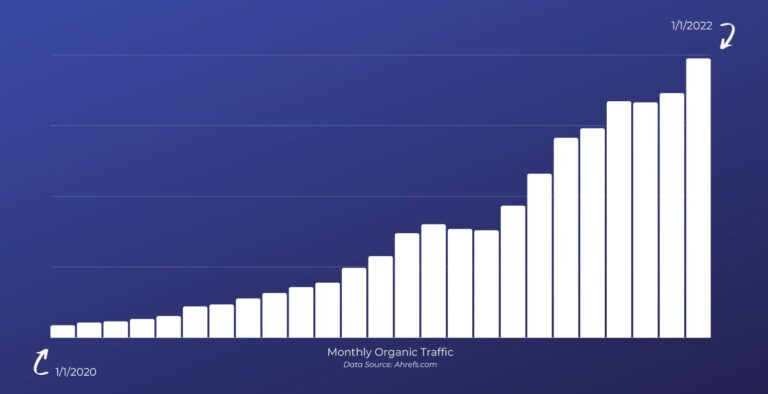B2B SEO Services
Are Your Rankings Going Up While Your SEO-Sourced Pipeline Stays Flat?
Tools like ChatGPT and AI Overviews have changed how buyers search. They want faster, better answers. Not more blog posts. SEO should be your top demand capture channel, not a checklist. You win with AI powered insights, future proof strategy, and SME interview led content. Ready for SEO services that convert?
B2B SEO Services
Are Your Rankings Going Up While Your SEO-Sourced Pipeline Stays Flat?
Tools like ChatGPT and AI Overviews have changed how buyers search. They want faster, better answers. Not more blog posts. SEO should be your top demand capture channel, not a checklist. You win with AI powered insights, future proof strategy, and SME interview led content. Ready for SEO services that convert?
Trusted By Some Amazing Brands



Real Impact From Our B2B SEO Client Partnerships




RevenueZen’s Evidence Based B2B SEO Services
Intent Based Keyword Research
Every successful B2B SEO campaign starts with research. Our keyword research not only looks at search volume and competitiveness, but also the intent of the target user through SERP analysis so we can map them to the correct stage of their buying journey. From there we’ll use this information in tandem with our keyword mapping process to create content that converts.


Technical SEO Audits
We’ll take a good hard look at every factor holding your website back from getting more traffic and leads. Then suggest or implement tried and true Google approved best practices to get you back on track. Our B2B SEO Audit Services involve optimizing your website to make it more easily found, understood, and included in Google’s search results.
Link Building & Digital PR
Links are the thumbs up and thumbs down system of the web. Search engines value authoritative and trustworthy websites with similar backlinks. We know how to get them. Through guest posting, content outreach, building business directory profiles, and good ol’ fashioned PR, we know how to get you links, build authority, and increase organic traffic.


Competitive Gap Analysis
Understanding the competitive landscape is essential as it helps inform your strategy. Particularly in an ever-evolving space like SEO, you need to know what works and what doesn’t as quickly as possible. This helps take the guesswork out of your campaigns and allows you to get results much more quickly. It’s the starting point of all of our B2B SEO services.
On Page Optimizations
On Page SEO is all about factors that your potential customers will interact with. Headings tags, meta descriptions, title tags, url optimization, and more. We do it all. These optimizations not only improve your Google rankings, but increase engagement from your users once they are on your site.

Successful Partnerships




Take Control Of Your SEO-Sourced Pipeline
We Help You Create Forward Thinking SEO Systems That Don’t Break From Google Updates
Every successful B2B SEO campaign is built off of strong research and planning. Our strategists start by taking the time to deeply understand your target customer and conduct the right research to uncover your most profitable opportunities.
Our system includes intent based keyword research, competitor analysis, content audits, technical SEO audits, and more in order to gather the right data.
We take these and work with you to prioritize the best fit strategy for your product.
After we’ve set our strategic north star, it’s time to get to work on your SEO foundations. In this stage we’re filling all of the gaps that we found in our analysis.
We’ll be updating title tags, improving website load performance, optimizing website url structure, creating bottom of funnel keyword targeting solutions pages, and fixing any code level technical errors.
This is all about improving your website to find the perfect balance between your business goals, your target customer’s needs, and what Google wants to see in order to rank you well.
Once we’ve built out your foundations and optimized the existing website content, we’ll shift to scaling your website’s performance.
This involves high quality content production, building links and creating partnerships to boost your domain authority, strategy consultation, and regular updates to ensure that you’re always one step ahead of the competition.
At this stage you’ll notice more inbound organic sourced website visitors and leads than ever before.
Now that we’ve seen significant improvements in inbound new website visitors and organic sourced leads, it’s time to refine.
We’ll work with you to identify how well these MQLs convert into SQLS, talk through your new sales cycle, and ensure that we’re not just generating “leads”, but that only the most qualified and ready to close opportunities are coming to your doorstep.
At this point, we’ve built your inbound flywheel to new heights. High quality and high value leads have been flowing directly from our SEO and Content efforts. Now is the time to analyze your pipeline value and deals closed to look at your return on investment.
We’ll work with you to dive into your CRM to ensure that the business value has exceeded the costs of our services and most importantly, further refine our strategy to take advantage of your most pressing business opportunities for the upcoming year.

FAQs
It’s Q2 2025 and as of writing this, we can confirm that yes, SEO does work for B2B. A well executed SEO strategy can be a great long term lead generation and brand awareness solution. The only caveat is that it has it’s own unique challenges and opportunities when compared to B2C focused SEO. You can learn more these opportunities in our blog post about the topic.
Of course.
You can learn more about our Generative Engine Optimization Solutions here or start with our GEO strategy guide for more high level information.
Whereas there is a ton of debate around what to call this new evolution of SEO (AEO, LLMO, GEO, etc), there is no question that it’s the future.
You need to be prepared for the ways that AI is shifting buying behavior and impacting organic search visibility.
B2B SEO (Business-to-Business Search Engine Optimization) optimizes a company’s website and content to rank higher in search engines, attract business audiences, and drive revenue through organic search. It includes technical SEO, content strategy, and brand authority-building to generate leads and support long sales cycles.
This is done by getting your content to the top positions on the first page of the SERPS (search engine results pages) for your target keywords that correspond to your business model and target customers. B2B SEO is different from B2C (as well as SaaS SEO Services ) campaigns because instead of targeting individual folks with your efforts, you are working to attract entire organizations.
These organizations make purchasing decisions much differently than individuals. Also the time that companies spend on making a purchase decision is longer. Known as a “sales cycle” this needs to go through a process of multiple people in the company reviewing your proposal, getting budget approvals, forming buying committees, and more.
By getting your business to show up in the search engine results pages (SERPS) for lucrative keywords like “B2B SEO Agency” or “B2B SEO Firm” (two of our primary target keywords), you gain trust with potential customers.
SEO involves many different components and takes a lot into consideration. Through researching long tail keywords, tweaking code, writing engaging content, updating meta tags, building links, and optimizing user experience, we are able to communicate to Google and other major search engines what your business and website are about.
Naturally, the better these search engines understand what you’re about, the more likely you are to rank higher for search queries relating to your business (also known as keywords). Higher rankings equals more targed traffic to your website. Those new users equal more qualified leads and eventually more customers as well.
A search engine optimization strategist (sometimes referred to as an “SEO specialist” or “SEO consultant”) is an individual who has spent 2-5 years minimum focusing their efforts on learning and practicing SEO professionally. This can be someone who works in house for an organization, leads the department of a digital marketing agency, or who freelances and works for themselves. Our B2B SEO agency contains 4 primary SEO strategists who own a unique aspect of your SEO campaign.
Winning in organic search takes a rock solid strategy, skillful execution, and patience. Of all the digital marketing channels, SEO is not a discipline for the faint of heart. Here’s a quick overview of the big four buckets:
On page: On Page SEO is all about factors that your clients and potential customers will interact with. Heading tags, image alts, page copy, internal links, keywords used, url structure, and more.
Technical SEO: This involves optimizing code structure, deploying meta tags in the right situations, website speed optimization, and adding structured data like Schema Markup. This allows search engines to be able to crawl your site more effectively.
Local SEO: Everything that Google would use to rank your site for a local audience or user. From Google My Business Reviews, business citations, neighborhood/city specific targeting, making sure your business information is consistent, etc.
Link Building (Off Page): Links are the thumbs up and thumbs down system of the web. Search engines evaluate your site (and it’s ranking potential) based on both the quality and quantity of links you have coming from other websites back to yours. Link building should only be done through white hat best practices.
A reputable B2B SEO Firm like RevenueZen can help you with all of these and more if you need it.
Implementing a robust B2B SEO strategy can significantly benefit businesses by increasing their online visibility and driving more qualified leads. Here are some key advantages:
Increased Online Presence and Credibility: By appearing at the top of search engine rankings, your business gains credibility and trust among potential clients.
Targeted Traffic: SEO helps attract visitors who are actively searching for solutions you offer, leading to higher conversion rates.
Qualified Leads and Sales Opportunities: Optimized content and keywords ensure that the traffic you receive is more likely to convert into leads and sales.
Competitive Edge: Staying ahead in search engine rankings means staying ahead of your competitors.
Enhanced Brand Awareness and Reputation: Consistent visibility in search results helps build and maintain a strong brand presence.
Yes, content creation and optimization are pivotal in a successful B2B SEO strategy. By producing high-quality, relevant, and informative content that addresses the needs and pain points of your target audience, you can attract and engage more qualified leads.
This can include:
Blog Posts and Articles: Regularly updated content that provides value to your audience.
Whitepapers and E-books: In-depth resources that establish your authority in the industry.
Case Studies and Success Stories: Real-world examples that demonstrate your expertise and success.
Infographics and Videos: Engaging visual content that simplifies complex information.
Product Descriptions and Sales Pages: Optimized pages that highlight the benefits and features of your offerings.
SEO campaigns require many different tactics to succeed, but creating content should be at the heart of your SEO efforts.
If you’re talking about adding in your keyword 157 times for no reason to a page and engaging in spammy link building practices in order to get a page to “rank”, then yes. That’s dead.
However, in 2022 and bey ond, mastering search intent, customer journey mapping, having a solid content marketing strategy, and using search as a vehicle to develop a deep understanding of your buyers in order to generate demand for your offer is very much alive.
As an SEO firm, we’ve bet our entire business model that building sustainable organic growth is possible through excellent SEO and content marketing, and that won’t be changing anytime soon.
